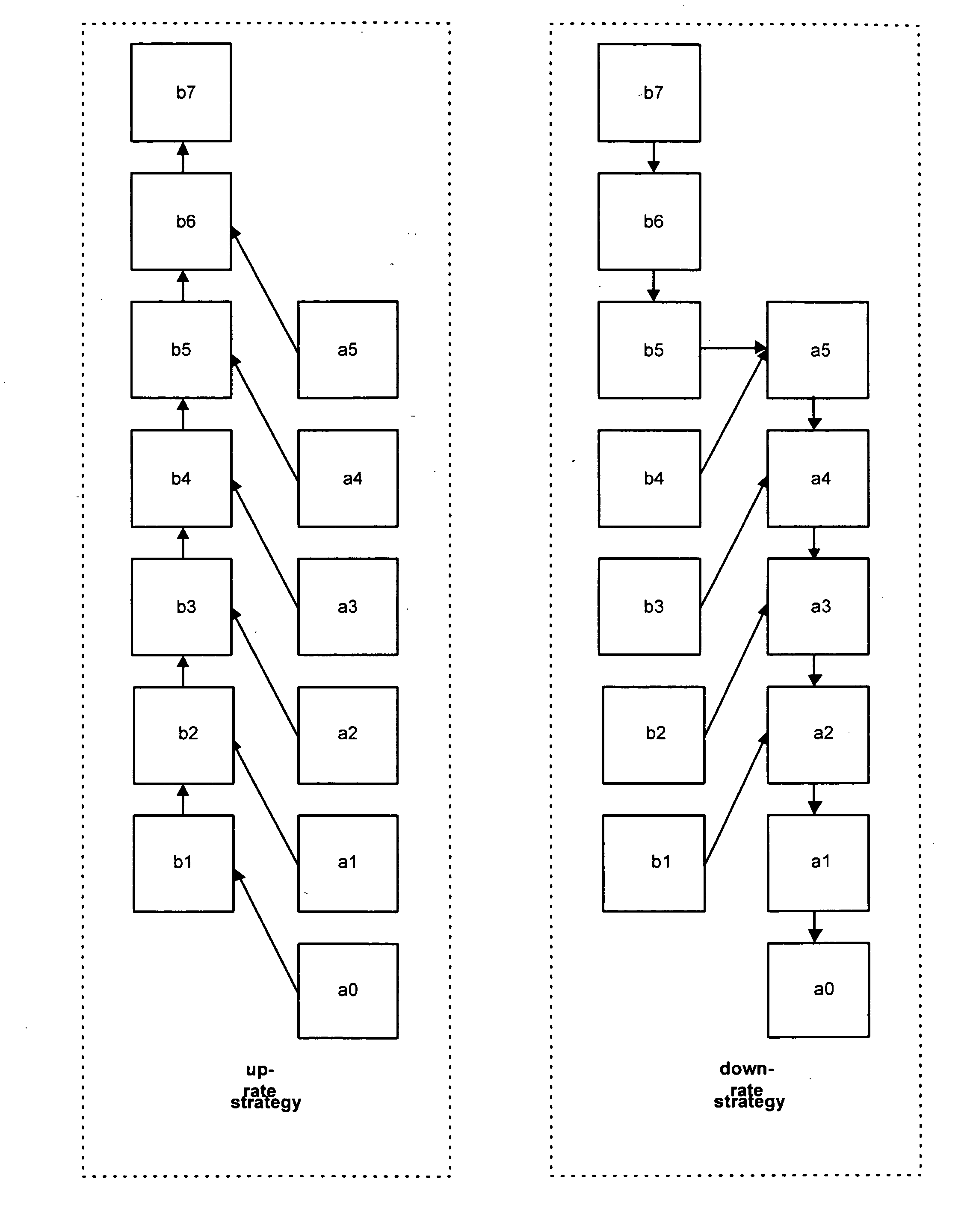Multiple list link adaptation
a multi-list link and link technology, applied in multiplex communication, channel coding adaptation, high-level techniques, etc., can solve the problems of low likelihood of a receiver accurately receiving signals sent at a high rate, rank deficient channel transfer matrix, and non-linearity of mimo system performance, so as to limit the freedom of configuration selection and flexibility
- Summary
- Abstract
- Description
- Claims
- Application Information
AI Technical Summary
Benefits of technology
Problems solved by technology
Method used
Image
Examples
Embodiment Construction
[0035] As described above with respect to FIG. 1, predetermined levels or modes of throughput, data rate or performance are assigned in a link adaptation system, and the system moves up and down these levels in a linear fashion dependent on current link conditions such as SNR. Each level is typically associated with a particular combination of modulation and channel coding rate or a predetermined modulation and coding scheme (MCS). A higher level can have a higher modulation rate, for example QPSK compared with BPSK, and / or a higher channel coding rate, for example ⅔ compared with ½.
[0036] However such arrangements are limited in cases where the channel condition or quality are constantly changing or when it is difficult to reliably estimate them, for example in indoor WLAN type environments. This problem is exacerbated in transmit diversity or spatial multiplexing systems such as MIMO, in which a greater number of factors (that cannot always be reliable estimated) affect the perfo...
PUM
 Login to View More
Login to View More Abstract
Description
Claims
Application Information
 Login to View More
Login to View More - R&D
- Intellectual Property
- Life Sciences
- Materials
- Tech Scout
- Unparalleled Data Quality
- Higher Quality Content
- 60% Fewer Hallucinations
Browse by: Latest US Patents, China's latest patents, Technical Efficacy Thesaurus, Application Domain, Technology Topic, Popular Technical Reports.
© 2025 PatSnap. All rights reserved.Legal|Privacy policy|Modern Slavery Act Transparency Statement|Sitemap|About US| Contact US: help@patsnap.com



